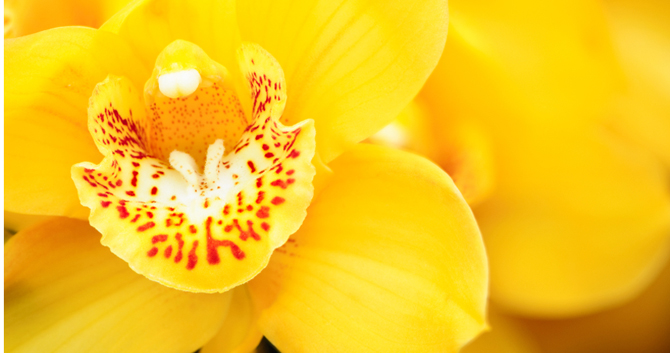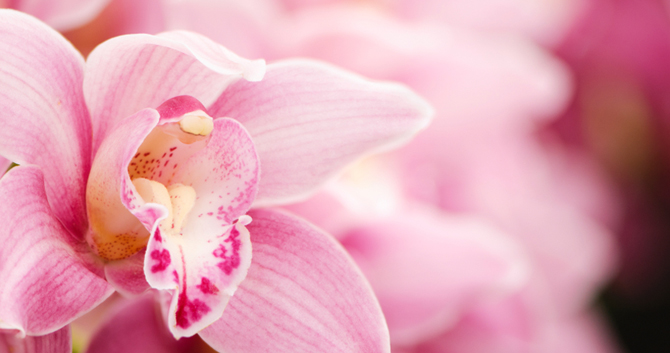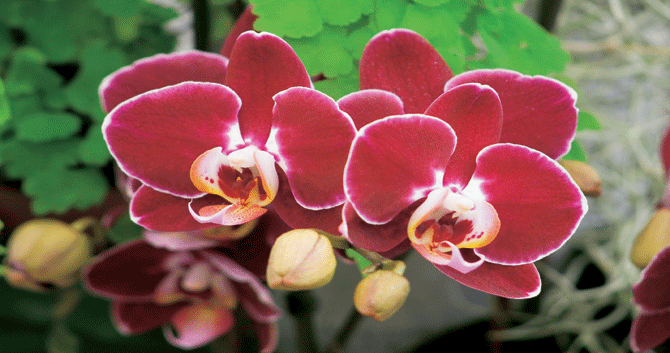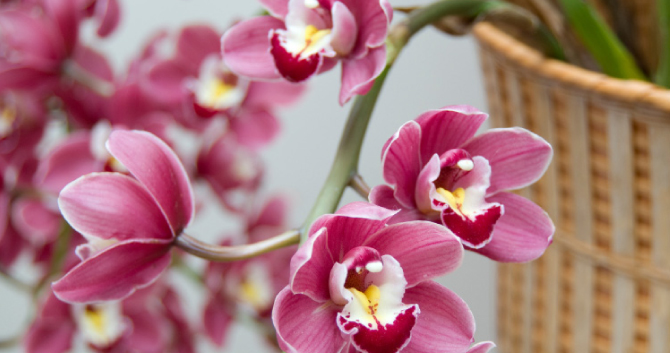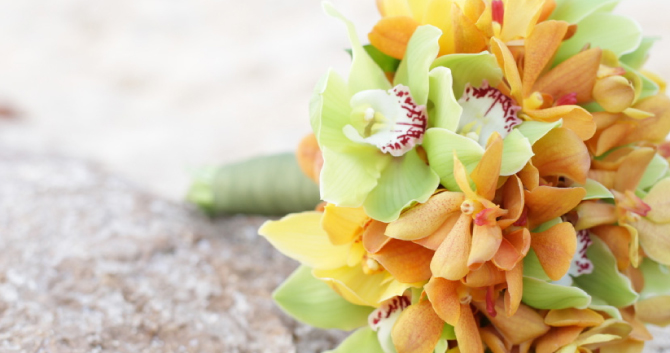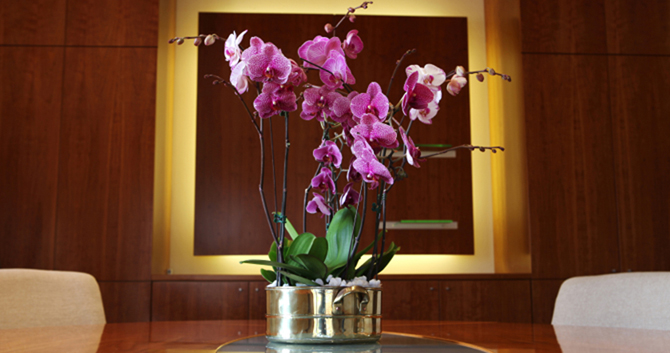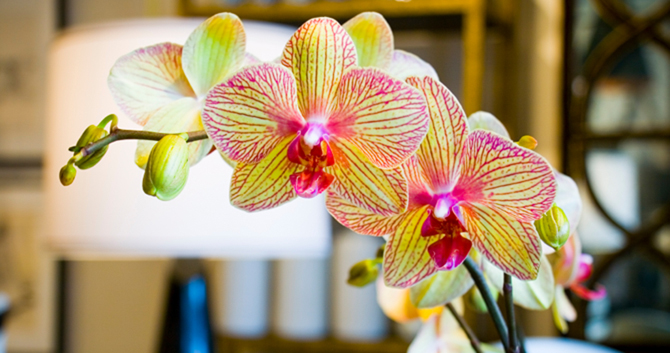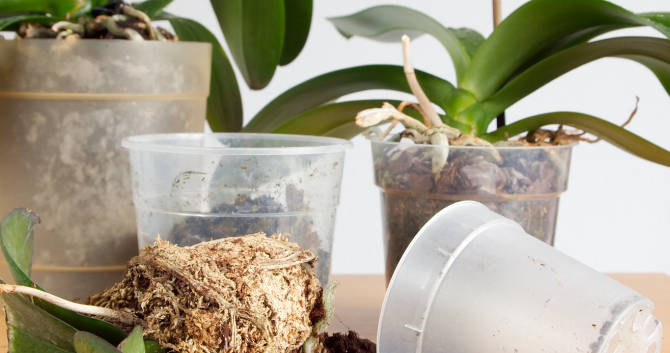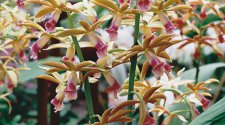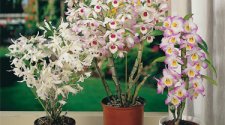They’re one of the most exotic plants on earth—yet orchids are amazingly easy to care for. Just follow a few simple care tips and you’ll enjoy these long-lasting, low-maintenance beauties for years.
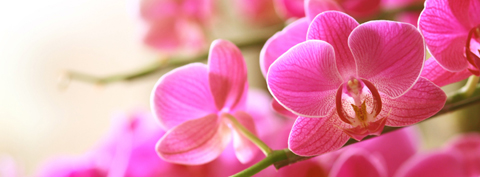 Long-lasting and surprisingly easy to care for, orchids are a great alternative to cut flowers.
Long-lasting and surprisingly easy to care for, orchids are a great alternative to cut flowers.
Most people assume orchids are tropical plants, but in fact, wild orchids grow on every continent except Antarctica (only grass is more widely distributed). For centuries, collectors have travelled far and wide to find new and unique specimens. Today, thanks to dedicated growers and breeders, you don’t have to travel farther than your local garden center, supermarket, or florist to find these exotic beauties.
Like the lovely “Moth Orchid”—aka Phalaenopsis (fail-eh-NOP-sis). Native to the Philippines, Borneo, Java, and the Himalayas, this orchid is so named because it looks like a large Asian moth in flight. Great for adding long-lasting color to a room, this orchid will re-bloom after the first flowering, as long as you remove the spent tips.
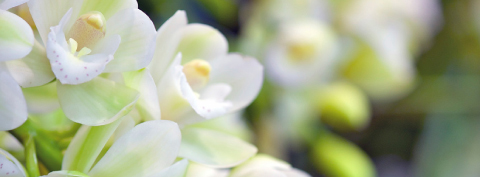 As gifts, Cymbidium orchids symbolize respect and friendship.
As gifts, Cymbidium orchids symbolize respect and friendship.
Looking for a gift? Try Cymbidium (sym-BID-ee-um)—as a gift, this orchid conveys respect and friendship. First discovered in the Orient, and native to the forests of India, China, Japan, Malaysia, Borneo, and the Philippines, these orchids are commonly called “Boat Orchids”—a nod to their boat-shaped lip—and are renowned for their long-lasting sprays of gorgeous flowers.
Or try any variety that strikes your fancy. They’re all easy to care for and few flowers come in more sizes, shapes, colors, and fragrances than orchids. Be sure to check the tags to learn the names of the varieties you find intriguing. While their Latin names can be intimidating, their common names can be delightful--like fairy’s slipper, dancing girls, cat’s tail, daddy long legs, king-in-his-carriage, and more.
Decorating Tips
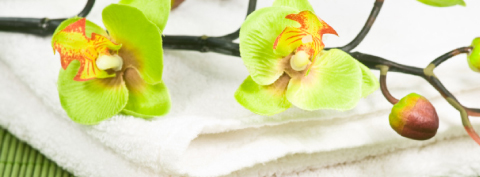 Guaranteed to add beauty, refinement, and tranquility to any setting, there are few plants better at creating a mood than orchids.
Guaranteed to add beauty, refinement, and tranquility to any setting, there are few plants better at creating a mood than orchids.
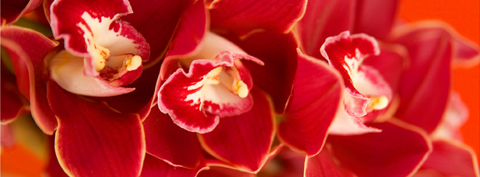 Deep red orchids blooms are perfect for holiday decorating, blooming for weeks
Deep red orchids blooms are perfect for holiday decorating, blooming for weeks
While they may seem like an extravagance, orchids can be a great alternative to cut flowers—they’re available year-round, their flowers can last months, and some varieties bloom several times a year. Their beauty lives on long after cut flowers have died.
As a result, orchids have become wildly popular with designers who turn to them to create a mood of refinement and tranquility. Interior designers are using orchids in exclusive spas, hotels, and restaurants. Wedding and event planners use them in centerpieces, bouquets, and corsages. They’ve even made their way into the workplace, offering a calming influence amid the hectic pace of the workday.
And, they make great hostess gifts--particularly when planted in silver or gold metallic planters during the holidays.
Trouble Shooting Tips
Just like any other houseplant, most problems are just a matter of adjusting the amount of light or water. And figuring out which is pretty simple.
Water
In general, orchids can tolerate too little water better than too much, but both lead to the same symptoms—shriveled leaves and slow to no growth. Check the roots to know which it is—too much water causes the roots to rot while too little water still allows for firm, white roots. Once you know, it’s just a matter adjusting the watering schedule.
Light
Most orchids prefer indirect light. The wrong amount of light changes the color of the leaves. With too little light, leaves turn unnaturally dark green and plants won’t flower. Too much light causes leaves to yellow and sometimes develop scorched blotches. Simply move your orchid to get the right light.

